June and Ken Bourke’s passion for conservation led them to return four traditional stone buildings which they believe are approximately 130 years old to their original glory. The works were carried out in Westport, Co Mayo, with the help of the GLAS Traditional Farm Buildings Grants Scheme.
“When going into a scheme like this, you have to be willing to embrace the terms and conditions. It’s about conservation and not just restoration,” said June. The entire scheme revolves around the principle of minimum intervention: “The scheme is about the structure of the building, to keep it standing there as it is. You won’t get any money for doing anything on the inside of it – you are just trying to make them weatherproof,” June said.
Starting from scratch
June and Ken knew they would eventually have to do something with these stone outbuildings. “If the scheme hadn’t come up we would have had to reroof a lot of the old sheds anyway,” June said. Ken added: “It wouldn’t have been in our nature to knock them. I like the old buildings. You had wonderful men in the past who looked into a quarry and saw a big pile of stones. They were able to take these and build a house that would stand for hundreds of years, all with the use of a hammer, a chisel and a shovel.”
Ken was able to carry out the majority of the work himself. He never received any training in mixing or applying lime mortar, but learned the skills needed as he went about restoring their current house, including plastering it with lime mortar. “I learned how to make the lime mix through trial and error. It’s tricky stuff to use and takes an awful lot of time to mix but then it goes off very slowly. I could mix it today and not use it for three days. It dries off very slowly but could last forever,” Ken said.
All pointing was carried out with a 3.5 NHL lime mix with a coarse sand. A natural hydraulic lime is used to provide a mix with a much stronger binding capacity than standard lime. This lime is more expensive than cement, but is necessary for such projects. Lime does not react well with cold temperatures and should be carried out during the summer or when there is no fear of freezing night-time temperatures.
Building 1: The poultry shed
The poultry shed required by far the most work. It began with the removal of ivy and dead growth from the masonry. The rear gable wall then had to be rebuilt, followed by replacing all of the timber roof structure and all galvanised roof sheeting. Concrete barges were replaced, while two rotten timber lintels above the windows were replaced with stone lintels. All four walls were repointed with lime mortar.
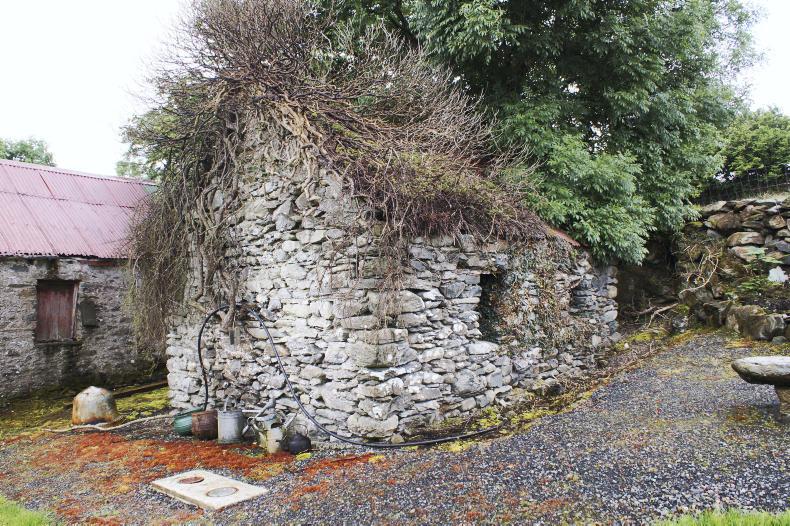
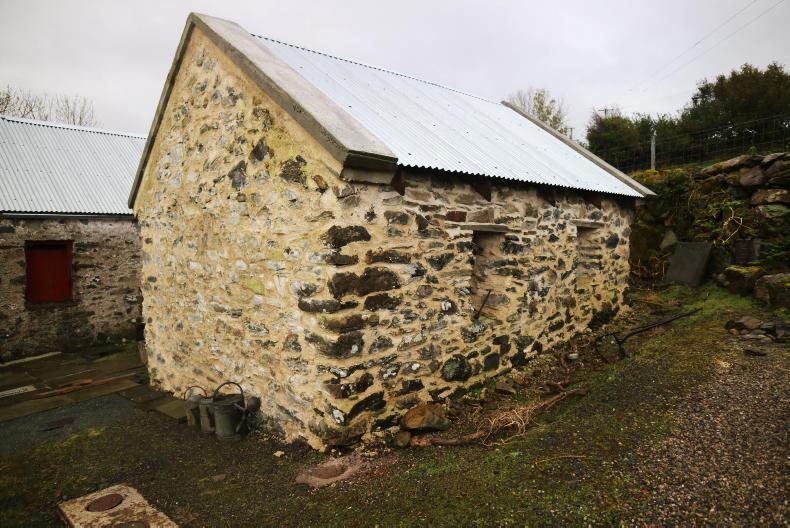
As there was no evidence of existing gutters or downpipes, the decision was made to omit them in the restoration.
“A lot of farmers would come along and think that while they are putting new gutters and downpipes on the other sheds that they would put some on this shed also, but you can’t do that and that is where issues can arise,” according to June.
The lime pointing was kept flush with the stonework, with any additional residue washed back from the stones to produce a clean finish.
Building 2: The cow shed
While the stone work on the old cow shed did not require extensive work, slight repointing of the gable end adjoining the horse stable did occur. The roof required the most attention. The side of the shed shown in the picture needed re-roofing but the far side had been done a number of years ago.
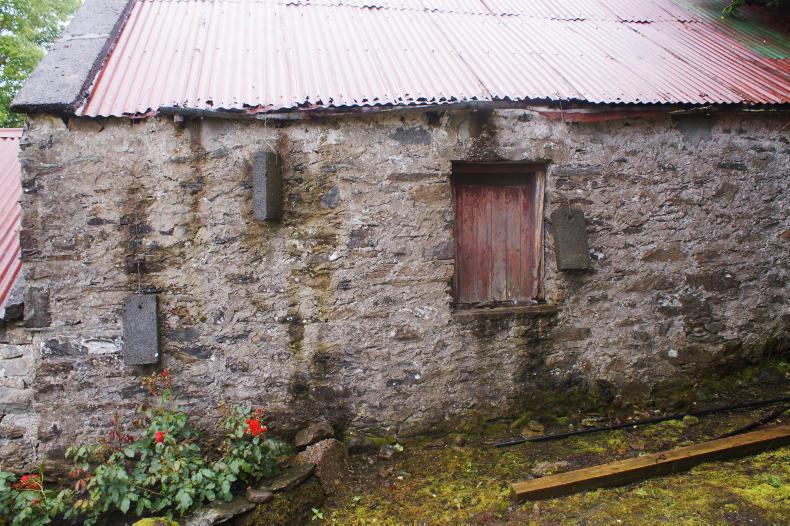

Wall plate, rafters and battens were replaced as was all of the galvanised sheeting on one side of the shed with new concrete barges installed. New galvanised gutters and downpipes were fitted also. All the galvanised roofs fitted to the sheds must be left for six to 12 months to weather before they are painted red.
Building 3: The stable
Used as a horse stable in times gone by, it is now partly used as a base for June to dye wool which she sells in shops in Westport for knitting, crochet and weaving. Again, the main work was the re-roofing of both sides of the shed. Most rafters were in good condition and did not need to be replaced. However, where there was a weakness in existing timbers, rafters were doubled up.
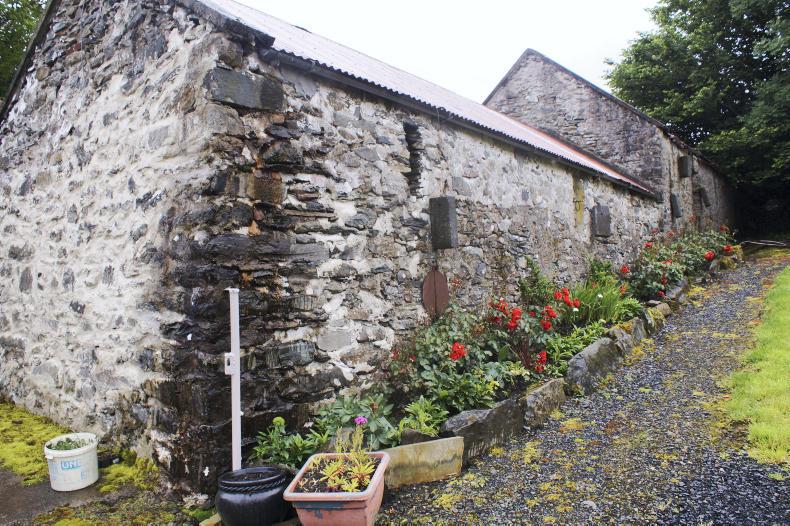
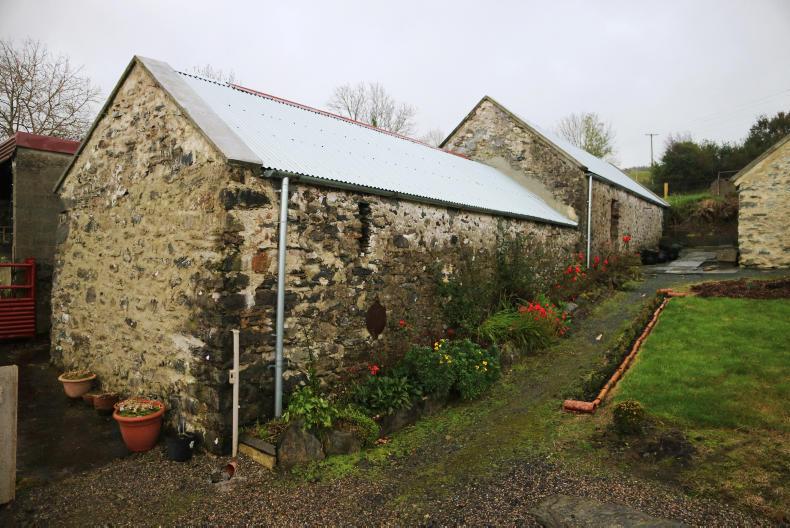
As the roll ridge capping was in good condition, it had to be saved and used for the restoration. A new concrete barge was installed also as seen in the pictures. New galvanised gutters and downpipes were fixed on both sides.
The two doors along the inside wall were repainted. No major repointing had to be undertaken but patch repointing occurred on certain parts.
Building 4: The turf shed
The final building to be restored was the turf shed. Only one side of the roof needed replacing, however the rafters were able to be retained as they were generally in good condition. Three of the four barges had to be redone while full repointing occurred on one of the gable walls and the rear wall of the shed. Galvanise gutters and downpipes were also fixed to the shed.
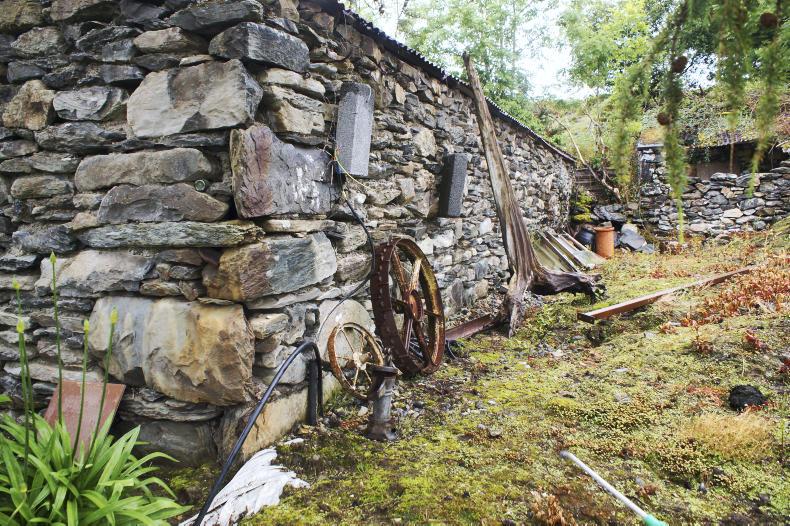

It would be a considerable workload for somebody to undertake the restoration of one shed but to do all four at the one time deserves recognition.
The work that both June and Ken put in to getting this project finished to such a high standard was substantial and they have got the just reward with a charming array of sheds surrounding their house.
What is eligible under the GLAS Traditional Farm Buildings Grant Scheme?